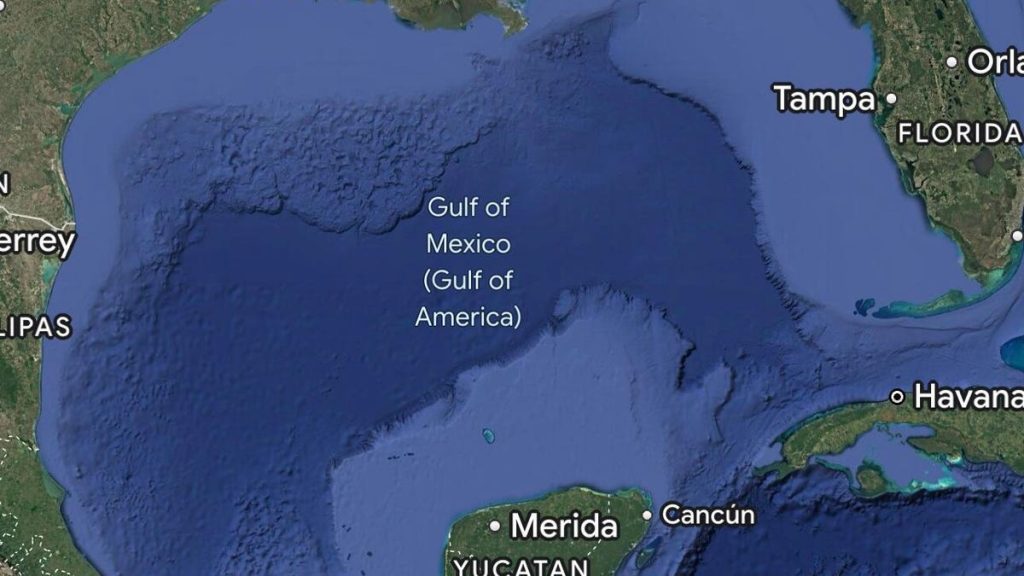The Gulf of Mexico Becomes the Gulf of America: A Shift in Geographic Naming
In a surprising move that has sparked both curiosity and controversy, three of the world’s leading map services—Google Maps, Apple Maps, and Bing Maps—have begun updating their platforms to change the name of the Gulf of Mexico to the Gulf of America. This change, which has been in the works since an executive order by former President Donald Trump, marks a significant shift in how this body of water, known as the Gulf of Mexico since the 16th century, is referred to in modern mapping systems. The transition, however, has not been without its challenges, as users and experts alike grapple with the implications of such a change.
The Role of Technology Giants in Geographic Naming
Google Maps led the charge in implementing the name change, rolling out the update on February 10. Apple Maps followed suit just a day later, on February 11, while Microsoft’s Bing Maps confirmed that the change was imminent, though it had not yet been implemented at the time of reporting. The decision to update the name was based on the Geographic Names Information System (GNIS) in the United States, which has officially recognized the body of water as the Gulf of America. A spokesperson for Microsoft emphasized the company’s commitment to providing accurate and up-to-date information, aligning with established product policies. This move underscores the growing influence of technology companies in shaping how we perceive and interact with geographic information.
The Transition: A Work in Progress
While the name change has been officially implemented, the transition is far from seamless. Users of Google Maps, for instance, may still search for “Gulf of Mexico” and be directed to the same body of water, now labeled as the Gulf of America. Similarly, Apple Maps automatically changes the search phrase “Gulf of Mexico” to “Gulf of America” when users look for the area. Bing Maps, while still displaying the old name as of press time, has assured users that the update is on the way. This gradual rollout highlights the complexity of updating vast databases and ensuring consistency across different platforms and regions.
User Reactions and the Implications of Change
The name change has elicited strong reactions from the public, with some users taking to social media to express their opinions. While some have embraced the change as a reflection of updated geographic standards, others have voiced concerns about the potential confusion and historical significance of the name Gulf of Mexico. A notable reaction came from a user on the social media platform X, who hinted at switching to alternative map software due to dissatisfaction with the change. The debate over the name change raises important questions about the balance between adhering to established traditions and embracing new standards in geographic nomenclature.
Google’s Role in Setting the Precedent
Google’s decision to implement the name change was announced in late January, following President Trump’s executive order. The company explained in a series of social media posts that the update was in compliance with Global Navigation Information Systems data and that it would take some time for the changes to be fully integrated into its Maps app. On February 10, Google published a blog post detailing the changes, emphasizing that the names displayed in the Maps app are determined by the user’s location, which is based on data from their phone’s operating system, SIM, network, and locale. This approach highlights Google’s commitment to providing location-specific information while adapting to new geographic naming conventions.
The Broader Implications of Geographic Renaming
The renaming of the Gulf of Mexico to the Gulf of America is more than just a technical update—it reflects a broader shift in how geographic names are determined and presented in the digital age. As technology companies like Google, Apple, and Microsoft continue to play a pivotal role in shaping our understanding of the world, the process of renaming geographic features raises important questions about authority, accuracy, and cultural sensitivity. While the change may seem minor to some, it underscores the complex interplay between technology, tradition, and the ways in which we navigate and identify with our surroundings. As the world becomes increasingly digital, the names we use to describe our environment will likely continue to evolve, reflecting both new standards and the dynamic nature of human perception.












